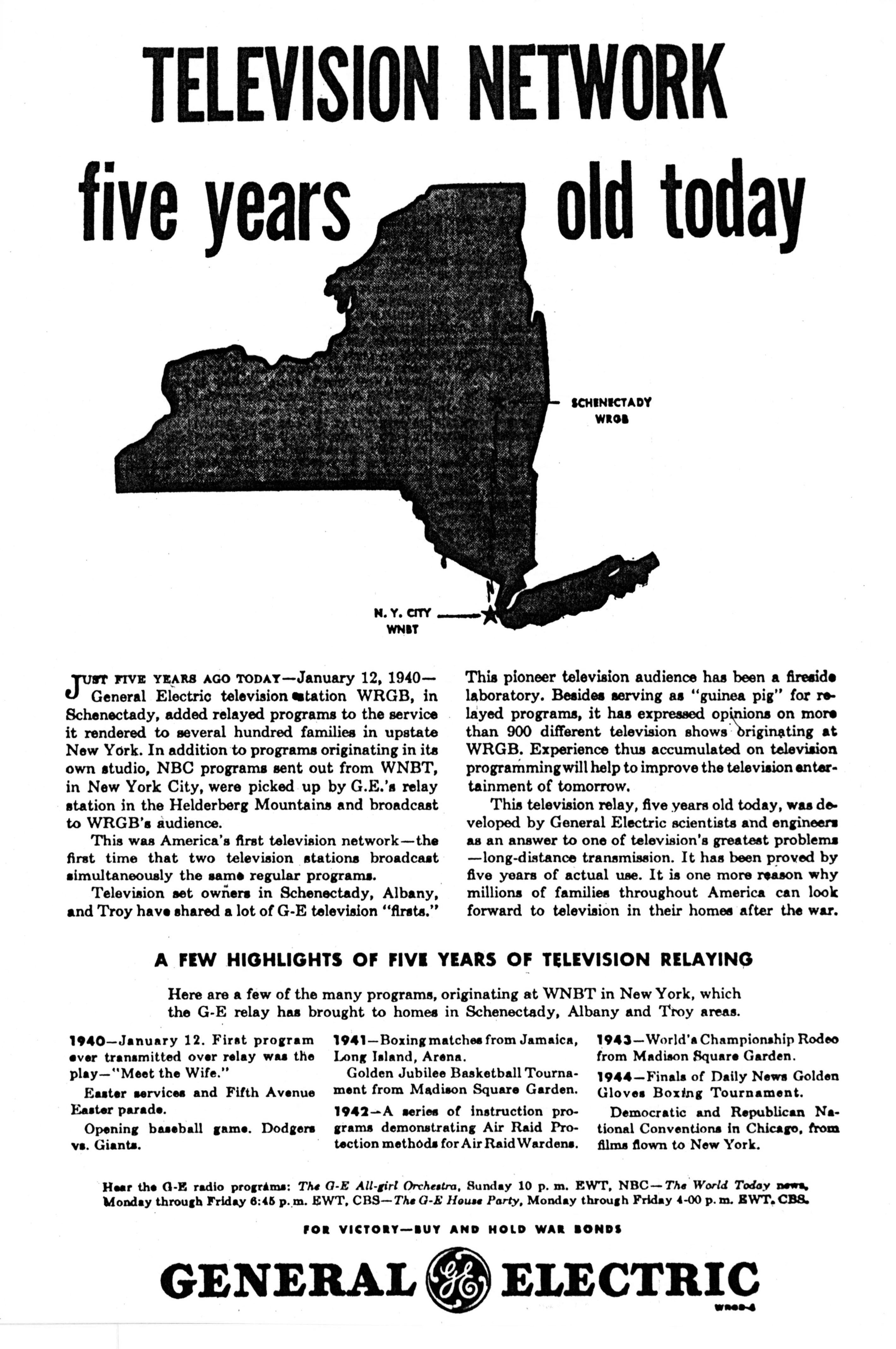From July 10, 1945, here’s an advertisement by General Electric promoting and introducing “PLASTICS”.
The advertisement, divided into six sections – each with an emblematic illustration – describes the use of plastic in three contexts: Military: The M-51 fuse; The home: kitchen utensils; Industry and machinery: gears; The military once again: the triple-cluster aerial bazooka as used by USAAF P-47s and P-51s, and, binoculars. The ad then concludes with a section about the design and development of plastic.
Though the first genuinely synthetic polymer had existed for some time (Bakelite, created by Leo Bakeland in 1907), only by the 40s and 50s did mass production of plastic actually commence.
The war was winding down, victory was obvious, and GE was thinking of the future.
______________________________
______________________________
General Electric answers your questions about
PLASTICS
26,000,000 fuses. At the tip of this trench mortar is the M-51 fuse – most difficult mass production job ever done in plastics. Sixty-seven different operations check its perfection. Design was completed and mold started by G.E. the day before Pearl Harbor. Why was General Electric picked for this job?
You’ll find the right answer in your own kitchen. The handle on your coffee maker, the case on the kitchen clock, the light switch on the wall – chances are these are G-E plastics. For General Electric has molded more plastic products than anybody else. And some you’d never guess. For example…
Cloth that wears like steel. Steel against steel is noisy. Wears fast. Imagine, then, a gear made of cloth – packed in layers, impregnated with resin, pressed under heat. Oddly enough, G-E engineers who discovered this found that for certain uses such gears were not only quieter, but actually outwore steel.
Would plastic bazookas blow up? The first hundred plastics tried failed. Then G.E. laminated a rare paper with a special resin. The plastic tube stood the shock of repeated firings, was non-inflammable. Now many planes carry these rocket launchers. G.E.’s 1400 presses turn out everything from electronic equipment housings to submarine parts.
Salt-water-proof binoculars are new. And won’t mildew in the tropics. General Electric worked these out with the U.S. Naval Observatory and specialists in optics. Plastics were combined with metal, and, to make shrinkage the same, a new metal alloy was developed. The lenses are universal focus, specially treated for night vision.
How do plastics get born? Designers say what shape, how heavy or light, soft or hard. Engineers design special machinery. Chemists then invent the plastic to fit the need. Finally, a factory can go to work. In war or peace, General Electric research and engineering count in plastics, too. General Electric Company, Schenectady, New York.
Hear the G-E radio programs: The G-E All-girl Orchestra, Sunday 10 p.m. EWT, NBC – The World News, Monday through Friday 6:45 p.m. EWT, CBS – the G-E House Party, Monday through Friday, 4 p.m. EWT, CBS.
FOR VICTORY – BUY AND HOLD WAR BONDS
Here’s One Little Reference
Thompson, Richard C., Swan, Shanna H., Moore, Charles J., and vom Saal, Frederick S., Our Plastic Age, Philosophical Transactions of the Royal Society of London, B, V 364, July 27, 2009.



